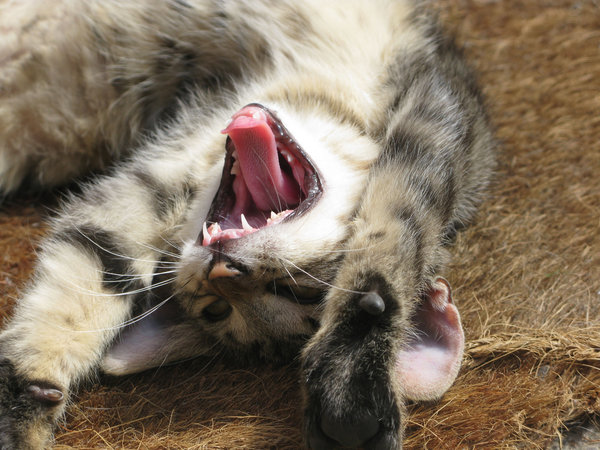Ingenious Cat Litter Alternatives You Have Not Become Aware Of
Wiki Article

Over the last few years, the pattern towards eco-conscious living has actually encompassed every aspect of our lives, including our beloved pets. As pet owners end up being significantly conscious of the environmental impact of their furry good friends, the need for natural cat litter has surged. However just what is natural cat litter, and why should animal owners consider making the switch? In this extensive guide, we'll look into the world of natural cat litter to explore its advantages, choices, and everything else you need to understand.
As ecological consciousness grows among pet owners, the mission for sustainable cat litter options has taken center stage. Standard clay-based litters, while popular, present environmental issues due to their non-biodegradable nature and the ecologically extensive process of clay extraction. This has caused a surge in interest for eco-friendly options that guarantee to be kinder to the world without compromising on efficiency. This short article delves into the world of cat litter options, highlighting their benefits, drawbacks, and what to think about when making the switch.
Clay-based cat litters, especially those that are non-clumping, have been the go-to option for years due to their absorbency and odor control homes. However, their ecological footprint is concerning. The mining of sodium bentonite, a crucial element in clumping clay litter, is disruptive to ecosystems. Furthermore, these litters do not deteriorate, contributing to garbage dump waste. Additionally, the dust from clay litters can be harmful to both human and feline breathing systems, prompting family pet owners to seek much healthier, more sustainable alternatives.
Biodegradable options are made from a variety of plant-based products, consisting of recycled paper, wood pellets, corn, wheat, and walnut shells. These materials not just break down naturally in the environment however also often originated from sustainable resources, lowering the environmental effect associated with their usage.
Recycled Paper Litter is made from post-consumer paper waste, turned into pellets or granules. It's highly absorbent, essentially dust-free, and suitable for felines and owners with respiratory level of sensitivities. Nevertheless, it might not manage odors as effectively as other materials and normally does not clump.
Wood Pellets, sourced from lumber scraps, provide a natural pine aroma that neutralizes odors without synthetic scents. They're low in dust and take in moisture well, developing into sawdust when wet. The sawdust can be sifted out, making the litter last longer, though some cats might not choose the larger pellet size.
Corn and Wheat Litter are understood for their clumping capability, similar to clay litters, making clean-up easy. They're eco-friendly and compostable, with natural enzymes that help control smells. Nevertheless, they can be pricier than conventional litter and might attract bugs if not kept effectively.
Walnut Shell Litter utilizes the natural absorbency of crushed walnut shells, offering outstanding smell control and clumping properties. It's dust-free and eco-friendly however can be more pricey and may not appropriate for cats with nut allergic reactions.
Silica gel litter, made from silica dioxide sand, oxygen, and water, is another option to clay. It's extremely absorbent, controls odors efficiently, and is low dust. While not naturally degradable, it's lighter and can last longer than clay litter, needing less regular modifications. However, its higher rate point and the texture, which some cats may discover off-putting, are factors to consider for possible users.
Cats can be particular about their litter. Slowly present the new litter by blending it with the old, increasing the percentage of the brand-new litter with time to permit your feline to change.
Ecological Effect: Think about the lifecycle of the litter product, from production to disposal, to guarantee it lines up with your ecological worths.
Health and wellness: Pick dust-free or low-dust alternatives to secure both your and your feline's breathing health. Make sure the litter is devoid of chemicals or scents that might damage your family pet.
Expense: While some options might be more costly upfront, their longevity and the amount required per change can make them affordable in the long run.
The Future of Cat Litter Alternatives
The trend towards sustainable family pet care products is growing, with innovations in cat litter options blazing a trail. Future developments may consist of more effective eco-friendly products, enhanced smell control and cat litter deodorizer clumping innovations, and even litter made from upcycled waste items. As consumer demand for environmentally friendly products increases, we can expect to see a broader variety of alternatives that don't jeopardize on benefit or efficiency.
The shift towards sustainable cat litter options is not just a trend but a reflection of a growing awareness of environmental concerns amongst animal owners. While conventional clay litters have dominated the market for several years, the selection of eco-friendly and ingenious products now offered offers appealing options for those wanting to decrease their ecological footprint. By thinking about aspects cat litter box enclosure such as ecological impact, health and safety, and cat acceptance, family pet owners can make educated choices that benefit both their furry companions and the world. As the market develops, Covered Litter Boxes the future of cat litter looks greener than ever, promising a win-win scenario for felines, their owners, and the environment.